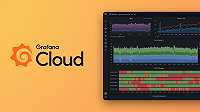remotecfg
remotecfg is an optional configuration block that enables Alloy to fetch and load the configuration from a remote endpoint.
remotecfg is specified without a label and can only be provided once per configuration file.
The API definition for managing and fetching configuration that the remotecfg block uses is available under the Apache 2.0 license.
Usage
remotecfg {
}Arguments
You can use the following arguments with remotecfg:
| Name | Type | Description | Default | Required |
|---|---|---|---|---|
attributes | map(string) | A set of self-reported attributes. | {} | no |
bearer_token_file | string | File containing a bearer token to authenticate with. | no | |
bearer_token | secret | Bearer token to authenticate with. | no | |
enable_http2 | bool | Whether HTTP2 is supported for requests. | true | no |
follow_redirects | bool | Whether redirects returned by the server should be followed. | true | no |
http_headers | map(list(secret)) | Custom HTTP headers to be sent along with each request. The map key is the header name. | no | |
id | string | A self-reported ID. | see below | no |
name | string | A human-readable name for the collector. | "" | no |
no_proxy | string | Comma-separated list of IP addresses, CIDR notations, and domain names to exclude from proxying. | "" | no |
poll_frequency | duration | How often to poll the API for new configuration. | "1m" | no |
proxy_connect_header | map(list(secret)) | Specifies headers to send to proxies during CONNECT requests. | no | |
proxy_from_environment | bool | Use the proxy URL indicated by environment variables. | false | no |
proxy_url | string | HTTP proxy to send requests through. | "" | no |
url | string | The address of the API to poll for configuration. | "" | no |
If the url isn’t set, then the service block is a no-op.
If not set, the self-reported id that Alloy uses is a randomly generated, anonymous unique ID (UUID) that is stored as an alloy_seed.json file in the Alloy storage path so that it can persist across restarts.
You can use the name field to set another human-friendly identifier for the specific Alloy instance.
The id and attributes fields are used in the periodic request sent to the remote endpoint so that the API can decide what configuration to serve.
The attribute map keys can include any custom value except the reserved prefix collector..
The reserved label prefix is for automatic system attributes.
You can’t override this prefix.
collector.os: The operating system where Alloy is running.collector.version: The version of Alloy.
The poll_frequency must be set to at least "10s".
At most, one of the following can be provided:
authorizationblockbasic_authblockbearer_token_fileargumentbearer_tokenargumentoauth2block
no_proxy can contain IPs, CIDR notations, and domain names. IP and domain names can contain port numbers.
proxy_url must be configured if no_proxy is configured.
proxy_from_environment uses the environment variables HTTP_PROXY, HTTPS_PROXY, and NO_PROXY (or the lowercase versions thereof).
Requests use the proxy from the environment variable matching their scheme, unless excluded by NO_PROXY.
proxy_url and no_proxy must not be configured if proxy_from_environment is configured.
proxy_connect_header should only be configured if proxy_url or proxy_from_environment are configured.
Blocks
You can use the following blocks with remotecfg:
| Block | Description | Required |
|---|---|---|
authorization | Configure generic authorization to the endpoint. | no |
basic_auth | Configure basic_auth for authenticating to the endpoint. | no |
oauth2 | Configure OAuth 2.0 for authenticating to the endpoint. | no |
oauth2 > tls_config | Configure TLS settings for connecting to the endpoint. | no |
tls_config | Configure TLS settings for connecting to the endpoint. | no |
The > symbol indicates deeper levels of nesting.
For example, oauth2 > tls_config refers to a tls_config block defined inside an oauth2 block.
authorization
| Name | Type | Description | Default | Required |
|---|---|---|---|---|
credentials_file | string | File containing the secret value. | no | |
credentials | secret | Secret value. | no | |
type | string | Authorization type, for example, “Bearer”. | no |
credential and credentials_file are mutually exclusive, and only one can be provided inside an authorization block.
Warning
Using
credentials_filecauses the file to be read on every outgoing request. Use thelocal.filecomponent with thecredentialsattribute instead to avoid unnecessary reads.
basic_auth
| Name | Type | Description | Default | Required |
|---|---|---|---|---|
password_file | string | File containing the basic auth password. | no | |
password | secret | Basic auth password. | no | |
username | string | Basic auth username. | no |
password and password_file are mutually exclusive, and only one can be provided inside a basic_auth block.
Warning
Using
password_filecauses the file to be read on every outgoing request. Use thelocal.filecomponent with thepasswordattribute instead to avoid unnecessary reads.
oauth2
| Name | Type | Description | Default | Required |
|---|---|---|---|---|
client_id | string | OAuth2 client ID. | no | |
client_secret_file | string | File containing the OAuth2 client secret. | no | |
client_secret | secret | OAuth2 client secret. | no | |
endpoint_params | map(string) | Optional parameters to append to the token URL. | no | |
no_proxy | string | Comma-separated list of IP addresses, CIDR notations, and domain names to exclude from proxying. | no | |
proxy_connect_header | map(list(secret)) | Specifies headers to send to proxies during CONNECT requests. | no | |
proxy_from_environment | bool | Use the proxy URL indicated by environment variables. | false | no |
proxy_url | string | HTTP proxy to send requests through. | no | |
scopes | list(string) | List of scopes to authenticate with. | no | |
token_url | string | URL to fetch the token from. | no |
client_secret and client_secret_file are mutually exclusive, and only one can be provided inside an oauth2 block.
Warning
Using
client_secret_filecauses the file to be read on every outgoing request. Use thelocal.filecomponent with theclient_secretattribute instead to avoid unnecessary reads.
The oauth2 block may also contain a separate tls_config sub-block.
no_proxy can contain IPs, CIDR notations, and domain names. IP and domain names can contain port numbers.
proxy_url must be configured if no_proxy is configured.
proxy_from_environment uses the environment variables HTTP_PROXY, HTTPS_PROXY, and NO_PROXY (or the lowercase versions thereof).
Requests use the proxy from the environment variable matching their scheme, unless excluded by NO_PROXY.
proxy_url and no_proxy must not be configured if proxy_from_environment is configured.
proxy_connect_header should only be configured if proxy_url or proxy_from_environment are configured.
tls_config
| Name | Type | Description | Default | Required |
|---|---|---|---|---|
ca_pem | string | CA PEM-encoded text to validate the server with. | no | |
ca_file | string | CA certificate to validate the server with. | no | |
cert_pem | string | Certificate PEM-encoded text for client authentication. | no | |
cert_file | string | Certificate file for client authentication. | no | |
insecure_skip_verify | bool | Disables validation of the server certificate. | no | |
key_file | string | Key file for client authentication. | no | |
key_pem | secret | Key PEM-encoded text for client authentication. | no | |
min_version | string | Minimum acceptable TLS version. | no | |
server_name | string | ServerName extension to indicate the name of the server. | no |
The following pairs of arguments are mutually exclusive and can’t both be set simultaneously:
ca_pemandca_filecert_pemandcert_filekey_pemandkey_file
When configuring client authentication, both the client certificate (using cert_pem or cert_file) and the client key (using key_pem or key_file) must be provided.
When min_version isn’t provided, the minimum acceptable TLS version is inherited from Go’s default minimum version, TLS 1.2.
If min_version is provided, it must be set to one of the following strings:
"TLS10"(TLS 1.0)"TLS11"(TLS 1.1)"TLS12"(TLS 1.2)"TLS13"(TLS 1.3)
Example
remotecfg {
url = "<SERVICE_URL>"
basic_auth {
username = "<USERNAME>"
password_file = "<PASSWORD_FILE>"
}
id = constants.hostname
attributes = {"cluster" = "dev", "namespace" = "otlp-dev"}
poll_frequency = "5m"
}


